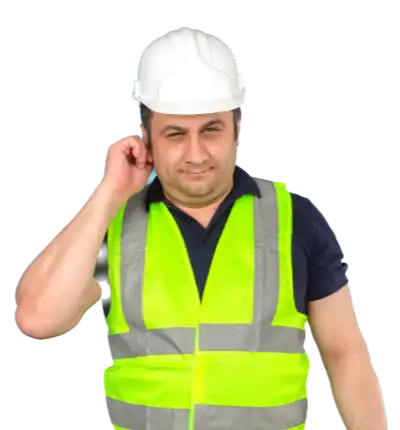HEARING PROTECTION: Prevent 'the silent killer'
Prevent hearing loss by knowing when hearing protection is needed. Hearing loss has been known to be the silent killer when it comes to hearing. The worse part about it is that it is also one of the most preventive areas of safety in the working environment.

“Blindness separates people from things; deafness separates people from people.” - Hellen Keller
One of the reasons hearing loss happens is because it can be so gradual that one doesn't even realize they have been in danger until it is too late. Below you are going to see the scope of the problem, how it happens and how to prevent hearing loss.

Scope of the Problem
- In the United States, hearing loss is the third-most common chronic physical condition among adults after hypertension and arthritis.
- About 12% of the U.S. working population has hearing difficulty.
- About 24% of the hearing difficulty among U.S. workers is caused by occupational exposures.
- About 8% of the U.S. working population has tinnitus (‘ringing in the ears’) and 4% has both hearing difficulty and tinnitus.
What causes Occupational Hearing Loss (OHL)?
- OHL can occur when workers are exposed to loud noise or ototoxic chemicals.
- Noise is considered loud (hazardous) when it reaches 85 decibels or higher, or if a person has to raise his/her voice to speak with someone 3 feet away (arm’s length).
- Ototoxic chemicals can cause OHL, make the ear more susceptible to the damaging effects of hazardous noise, or both. For example, a person taking certain ototoxic pharmaceuticals may lose hearing, become more susceptible to noise, or both. Ototoxic chemicals (and examples) include:
- solvents (styrene, trichloroethylene, toluene)
- metals and compounds (mercury compounds, lead, organic tin compounds)
- asphyxiants (carbon monoxide, hydrogen cyanide)
- nitriles (3-Butenenitrile, cis-2-pentenenitrile, acrylonitrile)
- pharmaceuticals (certain antineoplastic agents)
How Many Workers are Exposed?
- About 22 million workers are exposed to hazardous noise each year.
- About 10 million workers are exposed to solvents and an unknown number are exposed to other ototoxicants.
Request A Noise Test!
What is OHL Surveillance?
OHL surveillance includes:
- Collecting worker hearing data, exposure data and related information for analysis;
- Estimating how many workers have hearing loss or related health outcomes and how many workers are exposed;
- Examining these estimates by industry and occupation; and
- Monitoring trends over time.
The NIOSH OHL Surveillance Project commenced to establish a national repository for OHL data, and to conduct surveillance and research of this common occupational illness.

Who Needs A Noise Test?








